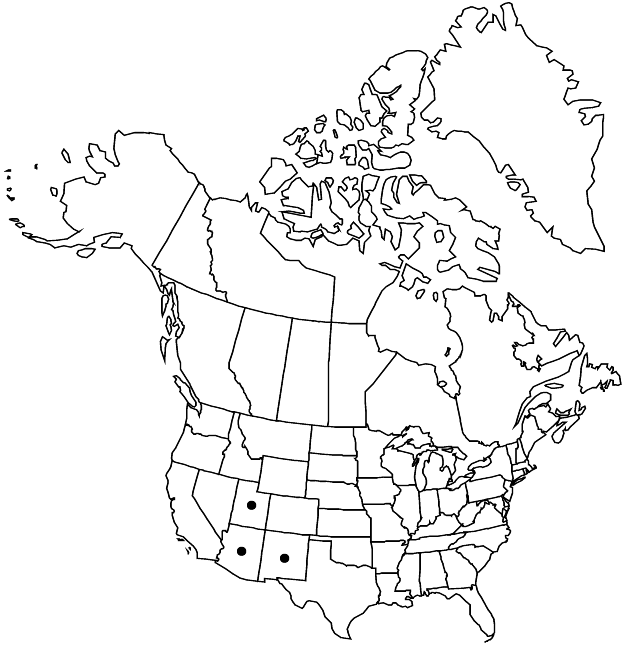Difference between revisions of "Silene scouleri subsp. pringlei"
Revis. N. Amer. Silene, 26. 1947.
FNA>Volume Importer |
FNA>Volume Importer |
||
| Line 11: | Line 11: | ||
|name=Silene pringlei | |name=Silene pringlei | ||
|authority=S. Watson | |authority=S. Watson | ||
| + | |rank=species | ||
|publication_title=Proc. Amer. Acad. Arts | |publication_title=Proc. Amer. Acad. Arts | ||
|publication_place=23: 269. 1888 | |publication_place=23: 269. 1888 | ||
| Line 17: | Line 18: | ||
|name=Silene scouleri var. eglandulosa | |name=Silene scouleri var. eglandulosa | ||
|authority=C. L. Hitchcock & Maguire | |authority=C. L. Hitchcock & Maguire | ||
| + | |rank=variety | ||
}} {{Treatment/ID/Synonym | }} {{Treatment/ID/Synonym | ||
|name=Silene scouleri var. grisea | |name=Silene scouleri var. grisea | ||
|authority=C. L. Hitchcock & Maguire | |authority=C. L. Hitchcock & Maguire | ||
| + | |rank=variety | ||
}} {{Treatment/ID/Synonym | }} {{Treatment/ID/Synonym | ||
|name=Silene scouleri var. leptophylla | |name=Silene scouleri var. leptophylla | ||
|authority=C. L. Hitchcock & Maguire | |authority=C. L. Hitchcock & Maguire | ||
| + | |rank=variety | ||
}} | }} | ||
|hierarchy=Caryophyllaceae;Caryophyllaceae subfam. Caryophylloideae;Silene;Silene scouleri;Silene scouleri subsp. pringlei | |hierarchy=Caryophyllaceae;Caryophyllaceae subfam. Caryophylloideae;Silene;Silene scouleri;Silene scouleri subsp. pringlei | ||
| Line 38: | Line 42: | ||
|elevation=2000-3300 m | |elevation=2000-3300 m | ||
|distribution=Ariz.;N.Mex.;Utah;Mexico. | |distribution=Ariz.;N.Mex.;Utah;Mexico. | ||
| − | |discussion=<p>Most of the collections of < | + | |discussion=<p>Most of the collections of <i></i>subsp.<i> pringlei</i> from Arizona tend to have larger calyces that suggest an affinity with Colorado material of <i></i>subsp.<i> hallii</i>. Although <i></i>subsp.<i> pringlei</i> is primarily a plant of high elevations in the arid regions of the southwest, its influence appears to extend as far north along the Rocky Mountains as the Canada–United States border, with many plants there showing some of the characteristics of this taxon.</p> |
|tables= | |tables= | ||
|references= | |references= | ||
| Line 47: | Line 51: | ||
-->{{#Taxon: | -->{{#Taxon: | ||
name=Silene scouleri subsp. pringlei | name=Silene scouleri subsp. pringlei | ||
| − | |||
|authority=(S. Watson) C. L. Hitchcock & Maguire | |authority=(S. Watson) C. L. Hitchcock & Maguire | ||
|rank=subspecies | |rank=subspecies | ||
| Line 62: | Line 65: | ||
|publication year=1947 | |publication year=1947 | ||
|special status= | |special status= | ||
| − | |source xml=https://jpend@bitbucket.org/aafc-mbb/fna-data-curation.git/src/ | + | |source xml=https://jpend@bitbucket.org/aafc-mbb/fna-data-curation.git/src/f50eec43f223ca0e34566be0b046453a0960e173/coarse_grained_fna_xml/V5/V5_417.xml |
|subfamily=Caryophyllaceae subfam. Caryophylloideae | |subfamily=Caryophyllaceae subfam. Caryophylloideae | ||
|genus=Silene | |genus=Silene | ||
Revision as of 21:53, 16 December 2019
Stems slender, 20–70 cm, densely puberulent with deflexed, gray, short, eglandular hairs intermixed with stipitate-glandular hairs. Leaves: blade finely puberulent on both surfaces, often sparsely so; basal tufted, blade narrowly oblanceolate, 8–12(–25) cm × 4–20 mm (including petiole), base cuneate into petiole, apex acute; cauline in 3–8 pairs, ± connate basally, reduced distally, ± sessile, blade narrowly lanceolate, 2–10(–17) cm × 3–10 mm, ciliate at base. Inflorescences tending to be nodding with secund flowers, usually with 3–7 flowering nodes, slender, elongate, 4–30(–60) cm, retrorsely gray-puberulent, glandular or not, not strongly viscid, distal nodes often with cymes sessile and reduced to 2 pedicellate flowers, cymes of proximal nodes sometimes pedunculate on peduncles to 10 cm, with 2–5 pedicellate flowers; peduncle ascending; bracts leaflike, 4–20 mm. Pedicels ascending, frequently sharply deflexed at base of calyx, slender, ± equaling calyx. Flowers: calyx tubular to narrowly campanulate in flower, ± umbilicate, 11–14(–16) × 3–5(–6) mm, becoming turbinate or fusiform in fruit, puberulent, glandular with short-stipitate glands, veins almost always green, those of sinus slender, shorter than tube, those of lobes lanceolate, broadened distally, lobes 3–4 mm, margins membranous, apex obtuse with broad, membranous, ciliate tip; corolla white, often suffused with purple, sometimes greenish, clawed, claw lanceolate, broadened distally, ciliate, limb deeply 2–4-lobed, 5–8 mm, lobes narrow, usually with smaller lateral teeth, appendages 1–2.5 mm; stamens equaling claw; styles shortly exserted. Capsules ovoid-ellipsoid, slightly longer than calyx; carpophore 2–5 mm. Seeds brown, ± reniform, ca. 1 mm; papillae inflated, large. 2n = 60.
Phenology: Flowering late summer.
Habitat: Subalpine meadows, open woodlands and scrub, rocky hillsides and canyons
Elevation: 2000-3300 m
Distribution

Ariz., N.Mex., Utah, Mexico.
Discussion
Most of the collections of subsp. pringlei from Arizona tend to have larger calyces that suggest an affinity with Colorado material of subsp. hallii. Although subsp. pringlei is primarily a plant of high elevations in the arid regions of the southwest, its influence appears to extend as far north along the Rocky Mountains as the Canada–United States border, with many plants there showing some of the characteristics of this taxon.
Selected References
None.